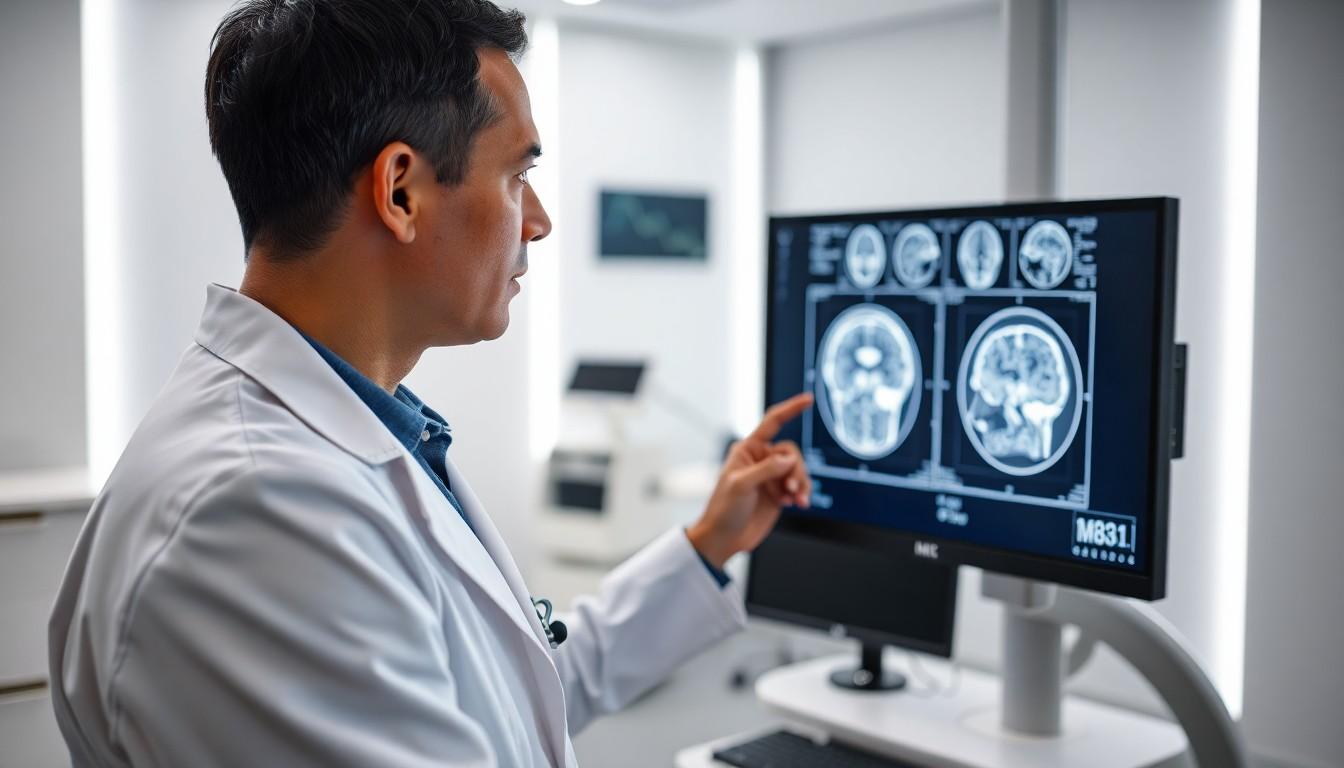Sudenzlase might sound like the latest dance craze, but it’s actually a serious condition that requires proper diagnosis. Understanding how this elusive ailment is identified can feel like trying to find a needle in a haystack. But fear not! With the right tools and knowledge, healthcare professionals can pinpoint sudenzlase with impressive accuracy.
Understanding Sudenzlase
Sudenzlase presents distinct challenges in diagnosis due to its complex nature. Symptoms often mimic other conditions, creating a need for thorough evaluation. Healthcare professionals typically begin with a comprehensive patient history. Documenting previous medical issues, lifestyle factors, and family history aids in understanding the context of symptoms.
Physical examinations play a crucial role in identifying sudenzlase. Physicians assess specific signs that may indicate this condition. Diagnostic imaging techniques, such as MRI or CT scans, provide visual insights into underlying issues. Detailed imaging ensures accurate interpretation of anatomical changes associated with sudenzlase.
Blood tests also contribute significantly to the diagnostic process. Specific biomarker levels can indicate the presence of abnormal physiological processes. Additional tests, including genetic screenings, help clarify the diagnosis when needed. Having this data allows healthcare providers to tailor treatment options effectively.
Collaboration among specialists enhances the diagnostic strategy. Neurologists, radiologists, and other experts may share insights, refining the understanding of a patient’s condition. A multidisciplinary approach ensures no detail is overlooked, promoting accurate results.
Regular follow-ups may be necessary for ongoing evaluation. Tracking the progression of symptoms helps refine the diagnosis further. When integrated, these diagnostic methods give healthcare professionals a robust framework to diagnose sudenzlase effectively.
Diagnostic Criteria for Sudenzlase

Diagnosing sudenzlase involves a multi-faceted approach, incorporating clinical assessments and laboratory tests to establish a clear understanding of the condition.
Clinical Assessment
Clinical assessment starts with healthcare professionals gathering a comprehensive patient history. This process includes discussing symptoms, prior medical conditions, and any relevant lifestyle choices. Neurological examinations follow to assess cognitive function, reflexes, and coordination. Imaging techniques, like MRI or CT scans, reveal distinctive anatomical changes that support the diagnosis. Observations made during these assessments aid in differentiating sudenzlase from other similar conditions. Collaboration among specialists enhances the thoroughness of the clinical evaluation.
Laboratory Tests
Laboratory tests play a vital role in diagnosing sudenzlase. Blood tests help rule out infections or inflammatory markers that could mimic symptoms. Genetic screenings serve to identify any hereditary factors contributing to the condition. These tests provide critical information in conjunction with clinical findings. Specialists analyze the results comprehensively, correlating them with the patient’s symptoms and medical history. Effective collaboration among medical professionals ensures a robust interpretation of laboratory data, facilitating an accurate diagnosis.
Imaging Techniques in Diagnosis
Healthcare professionals utilize various imaging techniques to aid in the diagnosis of sudenzlase. These methods provide essential insights into the condition’s anatomical changes and progression.
MRI and CT Scans
MRI scans offer high-resolution images of soft tissues, allowing for precise visualization of brain structures. The detailed imagery helps identify specific signs of sudenzlase, such as abnormal tissue growth or changes in brain morphology. CT scans serve as a complementary tool, providing quick images that highlight potential abnormalities. Both techniques play a vital role in understanding the extent of the disease and informing treatment plans. Physicians often recommend these imaging methods early in the diagnostic process to establish a clear understanding of the patient’s condition.
Ultrasound Usage
Ultrasound technology complements other imaging techniques, particularly for evaluating dynamic processes. It enables healthcare professionals to observe real-time changes in blood flow and tissue characteristics. In cases of sudenzlase, ultrasound can aid in assessing vascular health and identifying any irregularities. This approach is non-invasive and provides immediate results, allowing for timely decision-making. Incorporating ultrasound into the diagnostic toolkit enriches the comprehensive evaluation of sudenzlase, enhancing overall patient management.
Differential Diagnosis
Differentiating sudenzlase from similar conditions requires careful analysis. Several conditions may present symptoms akin to sudenzlase.
Conditions to Consider
Multiple disorders warrant consideration during the diagnostic process. Neurological disorders, such as multiple sclerosis and amyotrophic lateral sclerosis, mimic certain symptoms of sudenzlase. Infections like meningitis and encephalitis can cause inflammation and neurological deficits that overlap with sudenzlase indications. Autoimmune diseases, including lupus, can exhibit comparable systemic symptoms. Additionally, metabolic disorders, such as Wilson’s disease, should not be overlooked as they affect neurological function. Accurately identifying these conditions is crucial for appropriate treatment.
Importance of Accurate Diagnosis
An accurate diagnosis of sudenzlase is essential for implementing effective treatment strategies. Misdiagnosis can lead to inappropriate management, exacerbating patient symptoms. Healthcare professionals must integrate clinical assessments, diagnostic imaging results, and laboratory findings to achieve a comprehensive evaluation. Collaboration among specialists enhances the diagnostic accuracy, facilitating timely interventions. Regular follow-ups aid in monitoring symptom progression and refining diagnosis. Precise identification ensures patients receive tailored management plans, ultimately improving their quality of life.
Emerging Diagnostic Methods
Emerging diagnostic methods for sudenzlase enhance accuracy and efficiency in the evaluation process. Advanced imaging technologies continually evolve, providing clearer insights into the condition. Functional MRI, for example, measures brain activity by detecting changes in blood flow, offering a more dynamic understanding of neurological function. Similarly, diffusion tensor imaging maps the white matter tracts in the brain, revealing possible disruptions caused by sudenzlase.
Genetic testing also plays a significant role in diagnostics. By analyzing specific genetic markers, healthcare professionals can identify hereditary factors linked to the condition. This testing gives insights into individual risk profiles, guiding targeted interventions. Blood biomarkers are another promising avenue, as researchers investigate unique protein signatures that correlate with sudenzlase.
Point-of-care testing further streamlines the diagnostic process. This approach allows for rapid assessments in clinical settings, enabling timely decision-making. With this method, healthcare providers can administer tests during patient visits, reducing delays in diagnosis.
Telemedicine technologies contribute significantly to the assessment process. Remote consultations allow healthcare professionals to gather patient information effectively, even from a distance. This increased accessibility broadens the reach of specialized care, particularly for patients in rural or underserved areas.
Artificial intelligence (AI) and machine learning increasingly assist clinicians in diagnosing complex conditions. These advanced algorithms analyze vast amounts of data to detect patterns and predict disease progression accurately. Combining traditional methods with AI creates a more comprehensive view of the patient’s condition.
Integrating these emerging methods into clinical practice enhances the diagnostic framework for sudenzlase. These innovations not only improve accuracy but also facilitate timely and personalized management plans, ultimately benefiting patient outcomes.
Conclusion
Diagnosing sudenzlase requires a comprehensive and multi-faceted approach. By combining patient history clinical assessments and advanced imaging techniques healthcare professionals can navigate the complexities of this condition. The integration of laboratory tests and collaboration among specialists further enhances diagnostic accuracy.
Emerging technologies and methods continue to evolve the diagnostic landscape offering new insights and improving patient outcomes. With timely and precise diagnosis patients can receive tailored management plans that significantly enhance their quality of life. The ongoing commitment to refining diagnostic processes plays a crucial role in addressing the challenges posed by sudenzlase.

